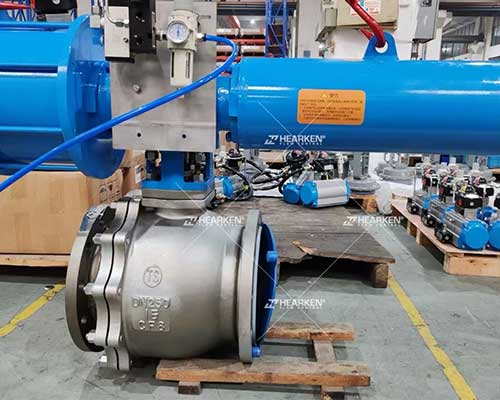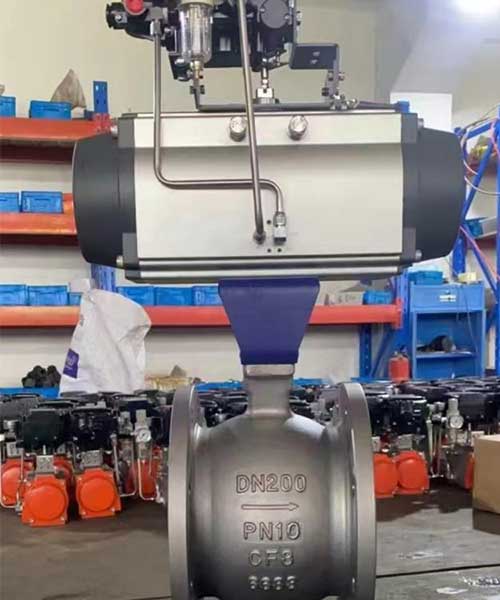What are the fault positions of pneumatic valve ? (FO, FC, FL)

Pneumatic valves are one of the most widely used equipment in various industries in recent years. They are driven by compressed air to open and close the valves. Pneumatic actuators can easily achieve fast linear cycle motion, simple structure, convenient maintenance, and can be used in various harsh working environments, such as those with explosion-proof requirements, dusty or humid working conditions. They are mainly used in oil, natural gas, chemical, electric power, printing and dyeing, mining, pharmaceutical and other places.
Pneumatic valves can be generally divided into air -open and air-close types according to their function . The choice of air-open or air-close is based on the safety of process production. When the air source is cut off, is it safer for the regulating valve to be in the closed position or the open position?

Air to Open is a valve that moves in the direction of increasing opening when the air pressure on the diaphragm increases. When the upper limit of the input air pressure is reached, the valve is in a fully open state. Conversely, when the air pressure decreases, the valve moves in the direction of closing. When there is no input air, the valve is fully closed. Therefore, sometimes the air to open valve is also called the Fail to Close FC.
The action direction of the air-to-close valve is just opposite to that of the air-to-open valve. When the air pressure increases, the valve moves in the closing direction; when the air pressure decreases or disappears, the valve moves in the opening direction or fully opens. Therefore, it is sometimes called the Fail to Open FO.

Then, during use, several fault positions that usually occur are (FO, FC, FL). In the valve fault closing /fault opening, the fault refers to: the action of the valve when the air source fails.
For the pneumatic valve fault position, there are mainly several situations:
- 1. When the pneumatic valve device is interlocked , the valve position should be as follows:
FC - air supply lost, valve in closed position
FO - air supply lost, valve in open position
FL - air source lost, valve is in the momentary position and remains in position
FLC - Gas source lost, valve holds position but tends to close, valve is in closed position (gas in cylinder is consumed)
FLO - Gas source lost, valve holds position but tends to open, valve is in open position (gas in cylinder is consumed)
- 2. When the regulating valve or switch valve participates in the interlocking action of the device , the valve position should have the following conditions:
FC - The air source is lost or the solenoid valve loses power, and the valve is in the closed position
FO - air source lost or solenoid valve lost power, valve in open position
AFL/EFC ——1. When the air source is lost, the solenoid valve does not lose power and the valve remains in position; 2. Regardless of whether the air source is lost or the solenoid valve loses power, the valve is in the closed position
AFL/EFO ——1. When the air source is lost, the solenoid valve does not lose power and the valve remains in position; 2. Regardless of whether the air source is lost or the solenoid valve loses power, the valve is in the open position.
Pneumatic valves achieve valve cut-off, connection, and regulation functions through output signals. Their opening and closing speeds are relatively fast and are often used for fast two-position cut-off. They can also be used to adjust the flow rate. By matching different accessories, various control methods can be achieved.





